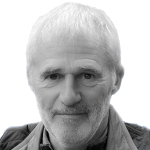Environmental Impact Assessment Report Oosterweel Connection
12.24
From 2012 to 2014
In 2010, the Flemish government opted for a tunnel instead of a viaduct to close the Antwerp ring road. TML evaluated the mobility proposals of the new EIR plan, with the Oosterweel link emerging as the best solution.
Following various reactions to earlier proposals for the realisation an additional Scheldt crossing for motor traffic, the Flemish Government decided on 29/9/2010 to complete the Antwerp ring road under the form of a tunnel (combination of a submerged tunnel and cut-and-cover tunnel sections) instead of under the form of a viaduct (the "Lange Wapper"), as initially envisaged in the existing GRUP and building permit application. The crossing of the Scheldt will continue to be done via an immersed tunnel. The Oosterweel link is not an isolated project, but is part of a broader package of measures, the Master Plan 2020, which includes not only several new infrastructures for car traffic, but also a number of water-related infrastructures and a large number of public transport projects.
For this new project, a new EIR plan was now also drawn up, weighing up the current plan against other proposed alternatives combined with possible other infrastructures and operating variants. Here, TML provided the evaluation of the proposals in terms of mobility.
In February 2014, the environmental impact report plan was approved by the EIR Department. Mobility is an important aspect in the assessment: it evaluates the Plan Oosterweelverbinding in different impact groups, such as the functioning of the traffic system, accessibility, traffic liveability, and road safety. Taking into account the traffic growth figures estimated by the services of the Flemish Region, the Oosterweelverbinding plan is assessed as the best solution to improve the Antwerp ring structure. In addition, the analyses show that imposing a freight ban in the Kennedy tunnel is not the best solution and that it is rather desirable to introduce a toll in all tunnels with a differentiated rate to optimally direct traffic flows on the ring structure.
Following various reactions to earlier proposals for the realisation an additional Scheldt crossing for motor traffic, the Flemish Government decided on 29/9/2010 to complete the Antwerp ring road under the form of a tunnel (combination of a submerged tunnel and cut-and-cover tunnel sections) instead of under the form of a viaduct (the "Lange Wapper"), as initially envisaged in the existing GRUP and building permit application. The crossing of the Scheldt will continue to be done via an immersed tunnel. The Oosterweel link is not an isolated project, but is part of a broader package of measures, the Master Plan 2020, which includes not only several new infrastructures for car traffic, but also a number of water-related infrastructures and a large number of public transport projects.
For this new project, a new EIR plan was now also drawn up, weighing up the current plan against other proposed alternatives combined with possible other infrastructures and operating variants. Here, TML provided the evaluation of the proposals in terms of mobility.
In February 2014, the environmental impact report plan was approved by the EIR Department. Mobility is an important aspect in the assessment: it evaluates the Plan Oosterweelverbinding in different impact groups, such as the functioning of the traffic system, accessibility, traffic liveability, and road safety. Taking into account the traffic growth figures estimated by the services of the Flemish Region, the Oosterweelverbinding plan is assessed as the best solution to improve the Antwerp ring structure. In addition, the analyses show that imposing a freight ban in the Kennedy tunnel is not the best solution and that it is rather desirable to introduce a toll in all tunnels with a differentiated rate to optimally direct traffic flows on the ring structure.


